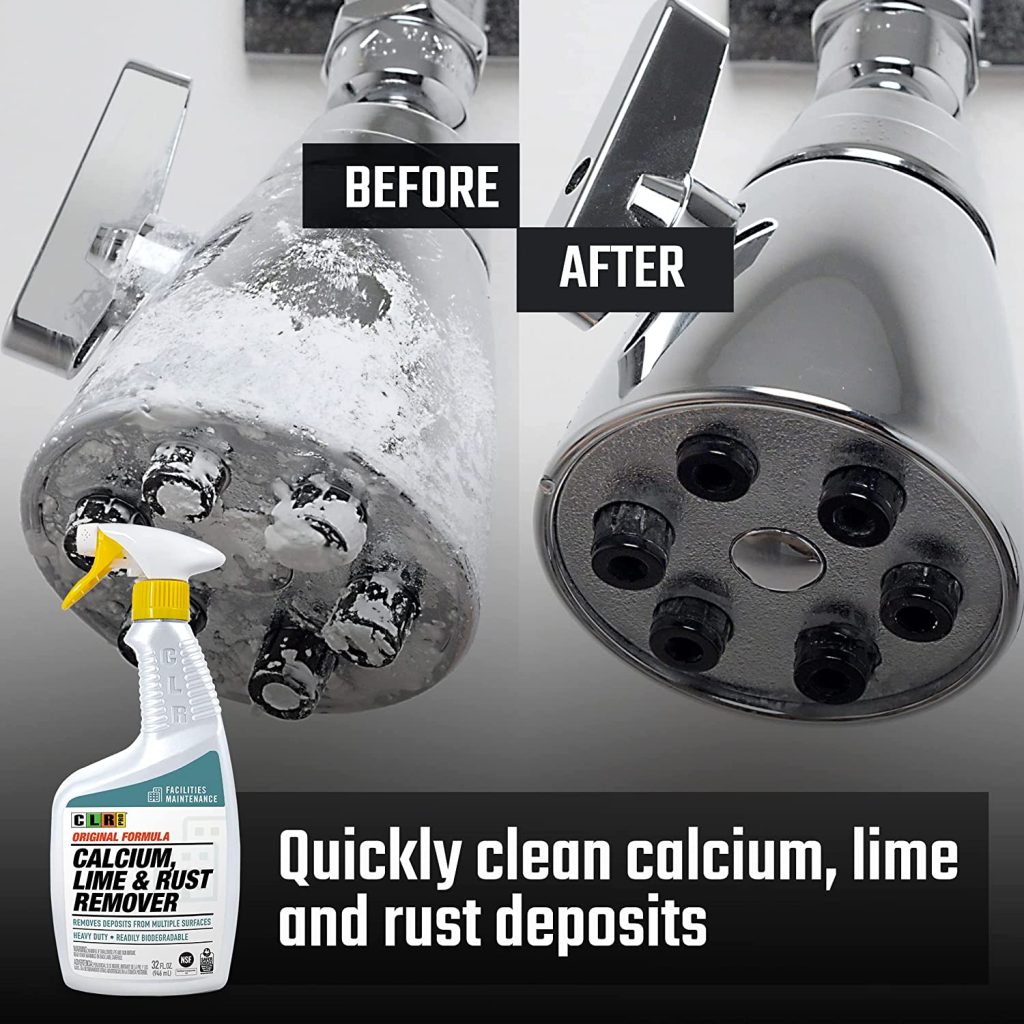To clean a showerhead without vinegar, use Baking Soda, Coca-Cola, CLR PRO (Calcium, Lime, and Rust Remover), Hydrogen Peroxide Method, and Oven Cleaners.
While vinegar is commonly used for cleaning, some people avoid it. We understand that only some people prefer vinegar’s strong scent or potential side effects, so we are here to provide effective and alternative solutions.
Let us show you the safe and efficient techniques to help you maintain a clean and functional shower head without relying on vinegar.
Why Do Shower Heads Get Clogged?
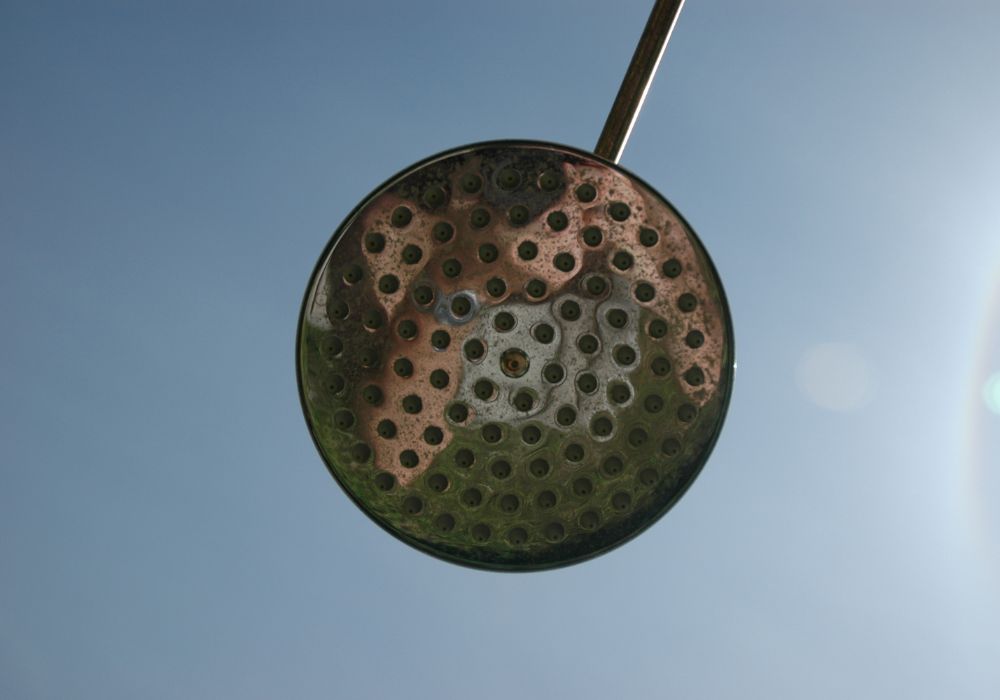
Clogged shower heads can be more than just an inconvenience. They can affect your shower experience by reducing water pressure and causing uneven spray patterns.
The following can be the reason for your clogged shower heads:
- Mineral Buildup in Hard Water Areas
Hard water is a common culprit behind shower head clogs. It contains a high concentration of minerals like calcium and magnesium.
When hard water is heated, these minerals form deposits that eventually lead to clogs.
As you shower, the hot water passes through the shower head, and the minerals in the hard water start accumulating on its surfaces.
Over time, these deposits restrict the flow of water and create blockages.
- Sediment Accumulation in Water Supply
Besides mineral buildup, sediment accumulation in the water supply can contribute to shower head clogs.
Sediments such as sand, dirt, and debris can find their way into the plumbing system and gradually accumulate in the shower head, impeding water flow and causing clogs.
- Soap Scum and Residue
Soap scum and residue from bathing products can accumulate on the surfaces of the shower head.
Over time, this buildup combines with minerals or sediments, forming stubborn clogs that affect water flow and pressure.
- Rust and Corrosion
If your shower head is made of metal, rust and corrosion can become factors in clogging.
When the protective coating on the shower head deteriorates or gets damaged, moisture exposure can lead to rust formation.
Rust particles mix with other substances and obstruct the water flow, causing clogs.
How To Clean A Shower Head Without Vinegar?
This section will explore various techniques to clean your shower head without vinegar, providing step-by-step instructions and helpful tips.
Clean Shower Head With Baking Soda

Baking soda is a versatile and natural cleaning agent that effectively tackles mineral deposits on your shower head.
Here’s how to clean your shower head using baking soda:
- Mix equal parts baking soda and water to create a paste.
- Apply the paste to the shower head, focusing on areas with mineral buildup.
- Allow the paste to sit for about 30 minutes to loosen the deposits.
- Use a soft brush or toothbrush to scrub the shower head, paying attention to the nozzles and crevices.
- Rinse the shower head thoroughly with water to remove any residue.
Clean Shower Head With Coca-Cola
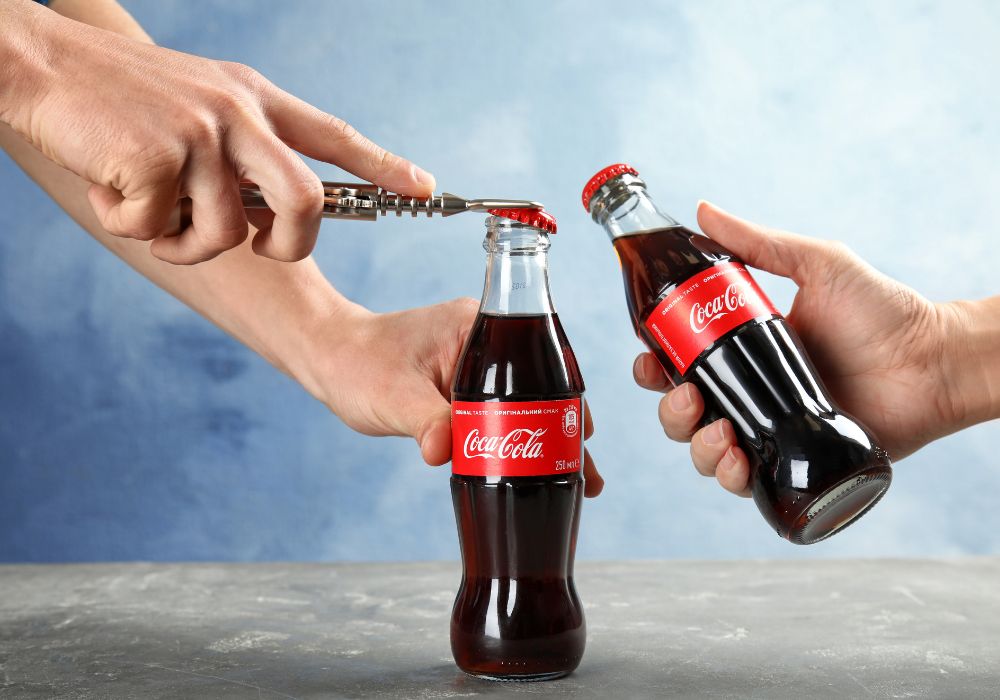
Surprisingly, Coca-Cola can be an alternative cleaning agent for your shower head. The acidic properties of Coca-Cola help break down mineral deposits.
Follow these steps to clean your shower head with Coca-Cola:
- Pour Coca-Cola into a container deep enough to submerge the shower head.
- Remove the shower head and place it in the container filled with Coca-Cola.
- Allow the shower head to soak in the Coca-Cola overnight or overnight.
- After soaking, scrub the shower head with a soft brush or toothbrush to remove loosened deposits.
- Rinse the shower head thoroughly with water to wash away any remaining residue.
Clean Shower Head With CLR PRO (Calcium, Lime, and Rust Remover)
CLR PRO is a commercial cleaning product that tackles calcium, lime, and rust deposits.
Follow the instructions below to clean your shower head with CLR PRO:
- Dilute CLR PRO according to the manufacturer’s instructions.
- Remove the shower head and immerse it in the diluted CLR PRO solution.
- Let the shower head soak for the recommended amount of time specified by the manufacturer.
- After washing, scrub the shower head with a soft brush to remove any remaining deposits.
- Rinse the shower head thoroughly with water to ensure no residue remains.
Clean Shower Head With Hydrogen Peroxide Method
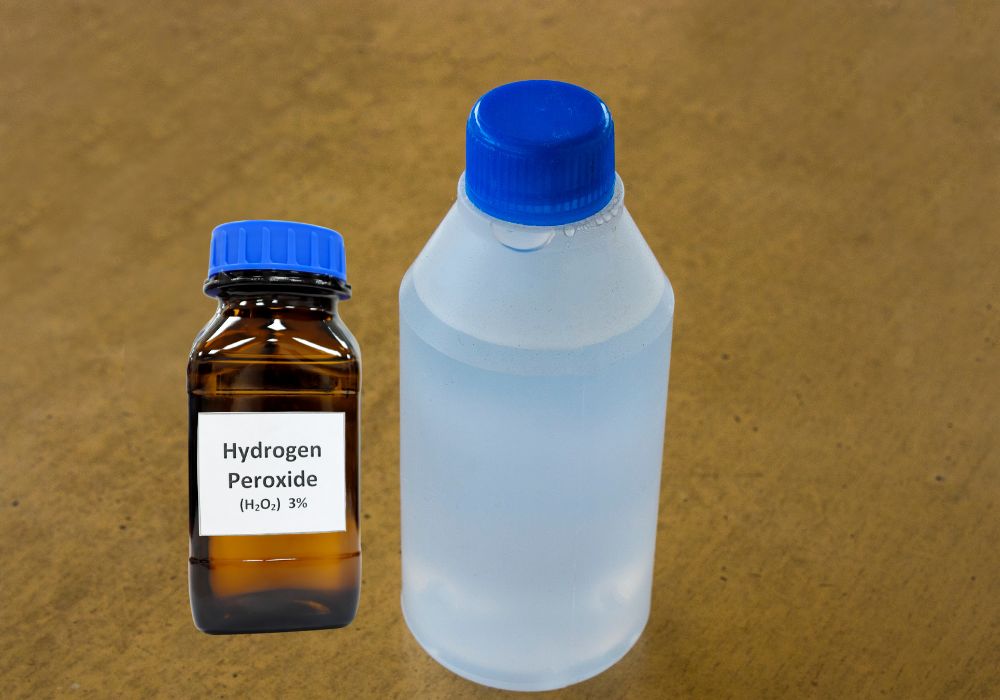
Cleaning your shower head with hydrogen peroxide is a simple and effective way to remove mineral deposits and sanitize the surface.
Follow these steps to clean your shower head using hydrogen peroxide:
- Mix equal parts hydrogen peroxide and water in a container. For example, you can combine 1/2 cup of hydrogen peroxide with 1/2 cup of water.
- Carefully remove the shower head from the water supply. This may involve unscrewing it from the shower arm or using a wrench if necessary.
- Submerge the shower head in the hydrogen peroxide solution. Ensure that the answer fully covers the entire shower head. You can use a larger container or a plastic bag to hold the key and immerse the shower head.
- Allow the shower head to soak in the hydrogen peroxide solution for about 30 minutes to an hour. This will give the hydrogen peroxide enough time to break down mineral deposits and kill bacteria.
- While the shower head is soaking, you can use a soft brush or toothbrush to scrub the surface of the shower head. Focus on the nozzles and crevices to dislodge any stubborn buildup. This step will help enhance the cleaning process.
- After the soaking period, remove the shower head from the hydrogen peroxide solution. Be cautious, as the answer may still be active.
- Rinse the shower head thoroughly with water to remove any residual hydrogen peroxide and loosened deposits. Ensure that all the nozzles are clear and free from any obstruction.
- Once the shower head is rinsed, reattach it to the water supply. Make sure it is securely tightened.
Clean Shower Head With Oven Cleaner
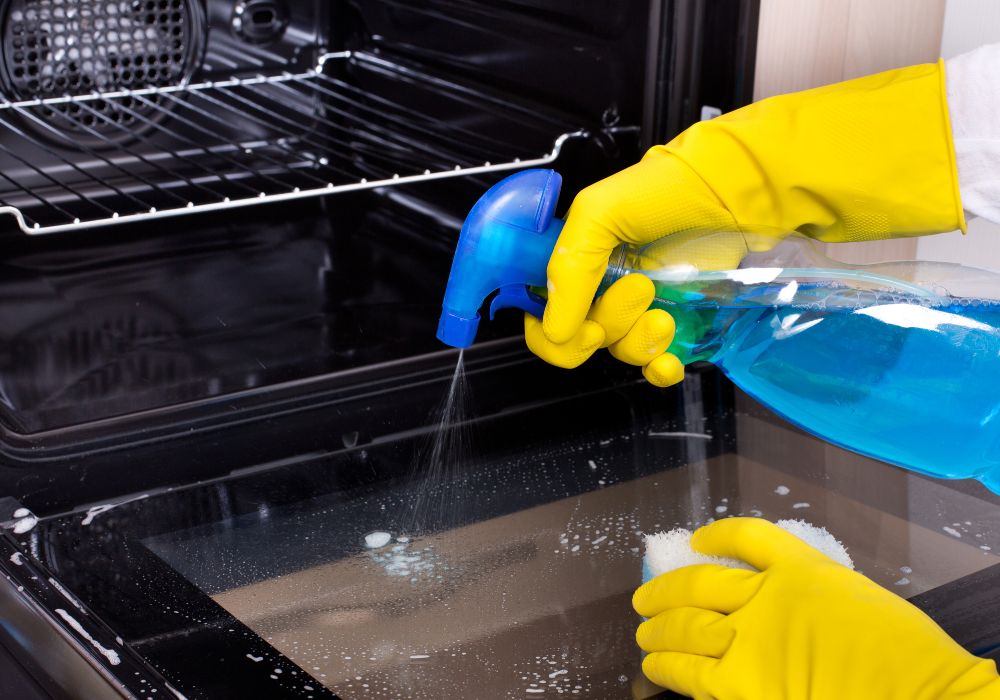
Oven cleaner is another unconventional yet effective method to clean a shower head, especially for those tough-to-remove mineral deposits.
Follow these steps to clean your shower head with oven cleaner:
- Ensure proper ventilation by opening windows or turning on a fan in your bathroom.
- Remove the shower head from the water supply.
- Take the shower head to a well-ventilated area, preferably outdoors.
- Spray a generous amount of oven cleaner onto the shower head, covering all surfaces.
- Leave the oven cleaner on the shower head per the product’s instructions, typically around 15-20 minutes.
- Scrub the shower head with a soft brush or toothbrush to remove loosened mineral deposits.
- Rinse the shower head thoroughly with water to remove any remaining residue and oven cleaner.
Always wear protective gloves and follow safety precautions when handling and using oven cleaners. After cleaning, reinstall the shower head and enjoy a revitalized showering experience.
How Often Should You Clean Shower Head?
As a general guideline, cleaning your shower head at least once every few months is recommended.
This timeframe allows for regular maintenance and helps prevent the buildup of mineral deposits and other substances affecting water flow.
However, if you live in an area with hard water or notice reduced water pressure, uneven spray patterns, or visible mineral deposits on the shower head, more frequent cleaning may be necessary.
Pay attention to the condition of your shower head and adjust the cleaning frequency accordingly to ensure optimal performance and hygiene.
Should You Clean the Inside Shower Head?
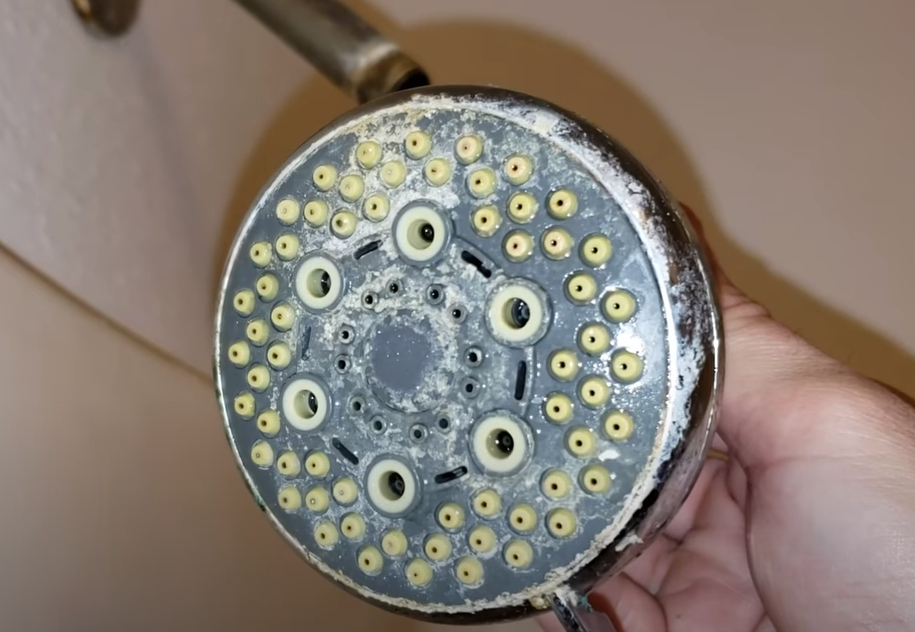
Yes, it is important to clean the inside of the shower head. Over time, mineral deposits, sediment, and bacteria can accumulate inside the shower head, affecting water flow and the overall performance of the shower.
Cleaning the shower head’s inside helps remove these buildups, ensuring proper water flow and hygiene.
How to Deep-Clean a Clogged Showerhead?
To deep-clean a clogged showerhead, follow these steps:
- Start by removing the showerhead from the water supply. This may involve unscrewing it using an adjustable wrench or pliers from the shower arm. Be careful not to damage the showerhead or arm during this process.
- Fill a basin or sink with warm water and mild dish soap. Submerge the showerhead completely in the soapy water and let it soak for 15 to 20 minutes. This will help loosen dirt, mineral deposits, or debris clogging the showerhead.
- After soaking, use an old toothbrush or a small brush with soft bristles to scrub the nozzles and surfaces of the showerhead. Pay close attention to areas where buildup is most visible or where water flow is restricted. Scrubbing will help dislodge any stubborn residue and unclog the showerhead.
- If the clog persists, you can use a small pin or needle to clean the spray nozzles carefully. Gently insert the pin into each nozzle to remove any remaining debris or mineral buildup. Be cautious not to damage the nozzles while doing this.
- Once you have finished scrubbing and cleaning the nozzles, rinse the showerhead thoroughly with clean water. Ensure that all soap residue and loosened debris are entirely washed away.
- If the showerhead is still not fully clean or there are stubborn mineral deposits, you can use a mixture of equal parts white vinegar and water as a natural cleaning solution. Fill a plastic bag with the vinegar-water mixture and place it over the showerhead, ensuring that the nozzles are fully submerged. Secure the bag in place using a rubber band or zip tie. Let it sit for about an hour to allow the vinegar to dissolve the mineral deposits.
- After the vinegar treatment, remove the bag and rinse the showerhead with water to remove any remaining vinegar and dissolved residue.
- Finally, reattach the clean showerhead to the arm, ensuring a secure fit. Turn on the water supply and check for water flow and pressure improvement.
How to Prevent Hard Water Buildup in Shower Head?
Preventing hard water buildup in your shower head is crucial to maintain its performance and prolong its lifespan.
Here are some practical measures you can take to prevent hard water buildup:
- Install a Water Softener: This system removes minerals like calcium and magnesium that cause hard water. You can significantly reduce mineral buildup by softening the water before it reaches your shower head.
- Use a Shower Head Filter: These filters typically use a combination of activated carbon and other filtration media to trap and neutralize mineral deposits. Regularly replace the filter cartridge as recommended by the manufacturer for optimal performance.
- Wipe Down the Shower Head: After each shower, take a few moments to wipe down the surface of the shower head with a soft cloth or sponge. Pay special attention to the nozzles and crevices where deposits tend to accumulate.
- Regularly Clean the Shower Head: Implement a regular cleaning schedule for your shower head. Depending on the hardness of your water, aim to clean it at least once every few months.
- Adjust Water Temperature: Hot water tends to exacerbate the effects of hard water by accelerating mineral buildup. Opt for warm or lukewarm water to help minimize the accumulation of minerals on your shower head.


